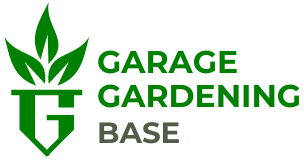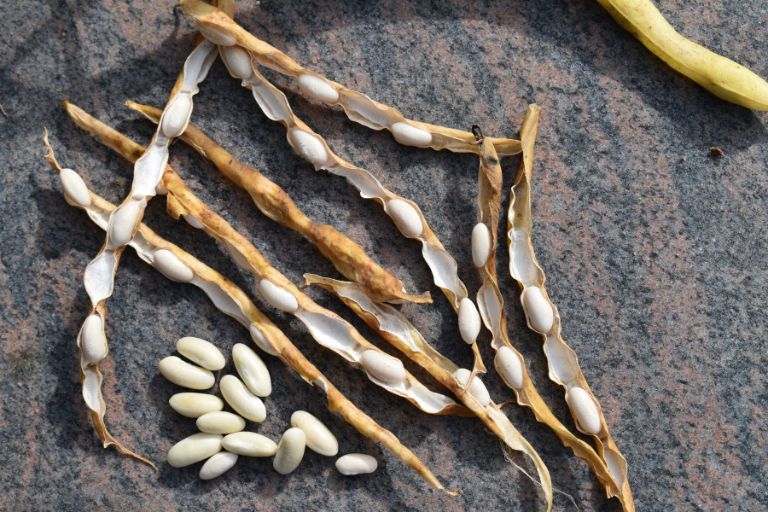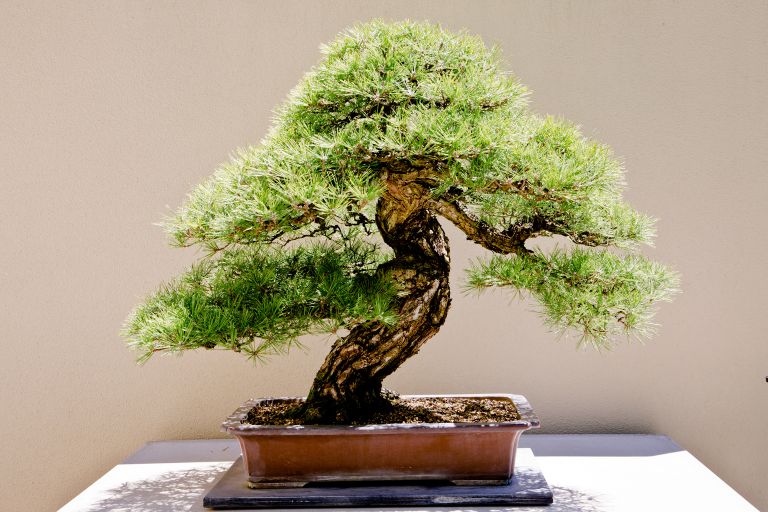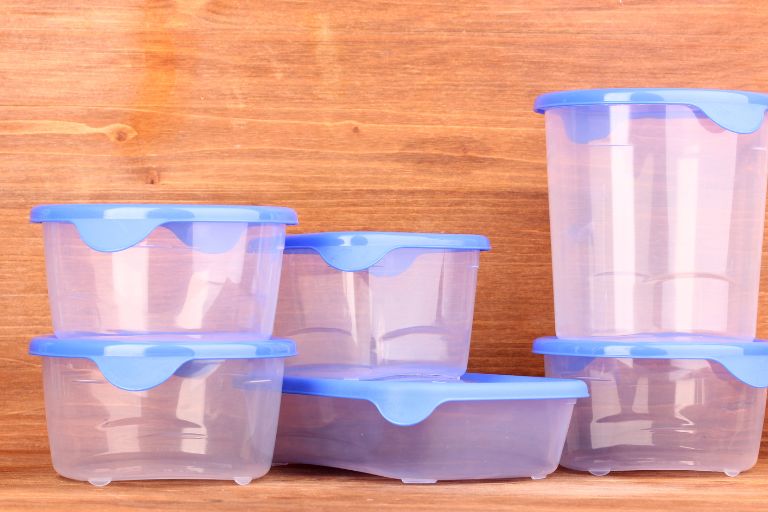Aromatic Oasis: Fragrant Plants Transforming Garage Gardens
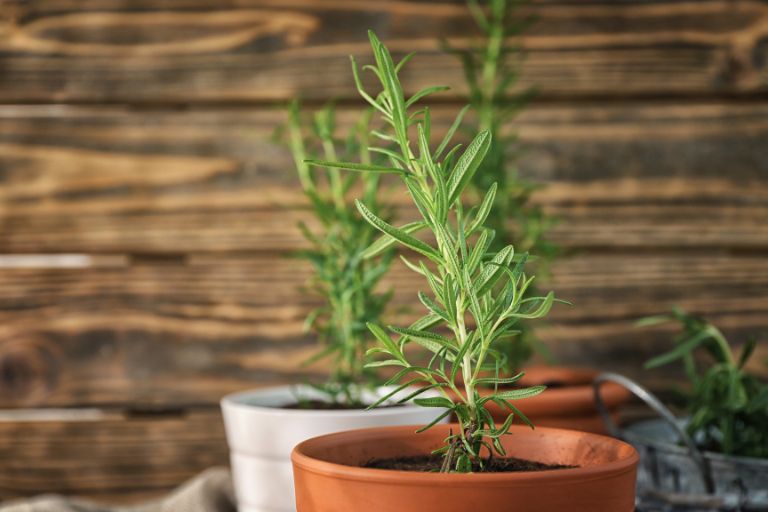
Welcome to the world of fragrant plants for the garage garden, where scents mingle with the echoes of city life to create an oasis of calm and rejuvenation. In this article, we embark on a sensory journey, exploring the enchanting realm of aromatic flora and discovering how these plants can enhance the ambience of even the most confined outdoor spaces. Join us as we delve into the selection, cultivation and design of fragrant plants and unlock the secrets to creating a truly aromatic oasis within the confines of your garage garden.
Why Fragrance Matters in Garage Gardens
Fragrance plays a central role in shaping our perception of space and influencing our mood and emotions. In the context of creating a relaxing and inviting atmosphere, fragrance adds a layer of sensory richness that goes beyond mere visual aesthetics. The following is how fragrance can help transform any environment, including garage gardens, into a tranquil retreat.
Stress reduction
Certain scents such as lavender, chamomile and jasmine have been scientifically proven to have a calming effect on the nervous system. Inhaling these scents triggers the release of neurotransmitters such as serotonin and dopamine, which promote feelings of relaxation and reduce stress and anxiety levels.
Improve mood
Pleasant scents have the power to lift our spirits and improve our overall mood. Scents such as citrus, rosemary and peppermint are known for their invigorating properties, helping to combat feelings of lethargy and increase mental alertness and productivity.
Memory and association
Our sense of smell is closely linked to memory and emotion, often evoking nostalgic feelings or transporting us to familiar places. Introducing familiar or beloved scents into a garage garden can evoke positive associations, creating a sense of comfort and familiarity within the space.
Sensory stimulation
Fragrance adds an extra dimension to the sensory experience of a garden, involving not only sight but also smell. By incorporating a variety of scented plants with different scents, garage gardens can offer a multi-sensory journey, inviting visitors to linger and explore their olfactory delights.
Connection with nature
Aromatic plants are nature’s perfume, infusing outdoor spaces with the scents of the natural world. In urban environments where greenery is scarce, the presence of fragrant plants in garage gardens provides a connection to nature, offering a respite from the hustle and bustle of city life and promoting a sense of calm and well-being.
Scented plants have the remarkable ability to transform small, confined spaces such as garage gardens into sensory retreats by engaging multiple senses and creating an immersive experience.
Aromatherapy
Scented plants emit natural essential oils that have therapeutic properties such as calming, uplifting or energising effects. In a confined space such as a garage garden, the concentrated scents of aromatic plants can have a profound effect on mood and well-being, effectively transforming the space into a sanctuary for relaxation and rejuvenation.
Fragrance diffusion
Unlike larger outdoor gardens where scents can disperse more freely, the enclosed nature of garage gardens allows scents to linger and intensify, enveloping visitors in a fragrant embrace. The compactness of the space increases the concentration of aromas, creating a more powerful olfactory experience.
Variety of scents
By carefully selecting a variety of fragrant plants with different flowering times and scent profiles, garage gardens can offer an ever-changing tapestry of aromas throughout the seasons. From the sweet perfume of roses in summer to the spicy scent of herbs such as basil and mint, each plant contributes its unique scent to the sensory symphony, creating a dynamic and captivating experience for visitors.
Texture and visual appeal
Many fragrant plants also have attractive foliage and flowers that add visual interest and texture to the garden space. The lush greenery, vibrant flowers and delicate petals of aromatic plants create a visually stimulating environment that complements the sensory experience and enhances the overall ambience of the garage garden.
Interactive experience
Fragrant plants invite visitors to engage with the garden on a deeper level, encouraging them to pause, take a deep breath and savour the scents wafting through the air. This interactive aspect of aromatic gardening fosters a sense of mindfulness and presence, allowing individuals to fully immerse themselves in the sensory delights of the space.
Connection to nature
In an urban environment where access to green spaces may be limited, the presence of fragrant plants in a garage garden provides a connection to the natural world and a refuge from the noise and chaos of city life.The soothing scents of lavender, jasmine or citrus trees evoke images of tranquil gardens and lush landscapes, transporting visitors to a place of serenity and beauty.
Aromatherapy, the use of aromatic plant extracts and essential oils for therapeutic purposes, has been recognised for centuries for its profound psychological benefits.
Stress reduction
Aromatherapy has been shown to trigger physiological responses in the body that help reduce stress levels. Inhalation of certain essential oils, such as lavender, chamomile and rose, can activate the parasympathetic nervous system, promoting relaxation and counteracting the body’s stress response. This can lead to lower levels of cortisol, the stress hormone, and a reduction in heart rate and blood pressure, creating a state of calm and serenity.
Mood enhancement
Essential oils have the power to affect mood and emotions through their aromatic compounds. Citrus oils such as lemon and orange are known for their uplifting properties, stimulating the production of serotonin, a neurotransmitter associated with feelings of happiness and well-being. Similarly, floral scents such as jasmine and ylang ylang can evoke feelings of joy and contentment, while earthy aromas such as sandalwood and patchouli can promote grounding and emotional stability.
Anxiety relief
Aromatherapy has been shown to be effective in reducing symptoms of anxiety and promoting relaxation. Inhaling essential oils such as lavender and bergamot can help calm the mind, reduce feelings of tension and create a sense of inner peace. The soothing scent of these oils can act as a natural tranquilliser, helping to calm anxious thoughts and promote better sleep.
Stress management
Aromatherapy can be a valuable tool for managing chronic stress and its associated symptoms. Regular exposure to calming essential oils can help build resilience to stressors, improve coping mechanisms and enhance overall emotional well-being. Incorporating aromatherapy into daily routines, such as diffusers, inhalers or aromatherapy baths, can provide ongoing support for stress management and promote a more balanced and harmonious lifestyle.
Emotional balance
Aromatherapy can help restore emotional balance and promote a sense of harmony within the mind and body. By targeting the limbic system, the area of the brain responsible for emotions and memory, essential oils can evoke powerful emotional responses and facilitate the release of pent-up tension and negative emotions. This can lead to a greater sense of clarity, resilience and emotional balance.
Choosing the Right Fragrant Plants for Your Garage Garden
Taking into account space limitations, light conditions and climatic variations, here’s a wide range of fragrant plants suitable for garage gardens.
Lavender (Lavandula spp.)
Lavender is a versatile and fragrant herb that thrives in sunny locations with well-drained soil. It produces beautiful purple, pink or white flowers and emits a calming scent known for its stress-relieving properties. Varieties such as English lavender (Lavandula angustifolia) and Spanish lavender (Lavandula stoechas) are popular choices for their compact growth and adaptability to container gardening.
Rosemary (Rosmarinus officinalis)
Rosemary is an aromatic herb with needle-like leaves and delicate blue flowers. It prefers full sun and well-drained soil, making it ideal for sunny garage gardens. Rosemary has a refreshing, pine-like fragrance that invigorates the senses and complements a variety of culinary dishes.
Jasmine (Jasminum spp.)
Jasmine is a fragrant vine with glossy green foliage and clusters of small, white flowers that release an intoxicatingly sweet scent, especially in the evening. Depending on the species and variety, Jasmine can tolerate partial shade and is well suited to trellises or hanging baskets in garage gardens with limited ground space.
Citrus trees (Citrus spp.)
Dwarf citrus trees, such as Meyer lemons, Calamondin oranges and Key limes, are compact and well suited to container growing in garage gardens. They thrive in sunny locations and produce fragrant flowers that fill the air with a delightful citrus scent. They also offer the bonus of edible fruit, adding both visual and culinary appeal to the garden.
Scented Geraniums (Pelargonium spp.)
Scented geraniums come in a variety of fragrances, including rose, lemon, mint and citrus. These compact plants have colourful foliage and small, delicate flowers, making them perfect for adding visual interest to garage gardens. Scented geraniums prefer well-drained soil and tolerate partial shade, making them versatile options for container gardening.
Mock orange (Philadelphus spp.)
Mock orange is a deciduous shrub prized for its showy, white flowers that give off a sweet, citrusy scent reminiscent of orange blossom. It prefers full sun to partial shade and well-drained soil, making it suitable for garage gardens with varying light conditions. Mock Orange adds height and structure to beds or large containers, creating a focal point of fragrance and beauty.
Dianthus (Dianthus spp.)
Dianthus, also known as pink or carnation, are compact perennial flowers with a spicy, clove-like fragrance. Available in a range of colours, including pink, red, white and bicoloured varieties, they add vibrancy and fragrance to the garage garden. Dianthus thrive in full sun and well-drained soil, making them an excellent choice for borders, rock gardens or container plantings.
Scented Basil (Ocimum basilicum)
Scented basil varieties, such as lemon basil or cinnamon basil, offer a delightful twist on traditional culinary herbs. They have aromatic foliage with unique scents ranging from citrus to spicy, adding interest and fragrance to the garden. Scented Basil prefers full sun and well-drained soil, making it suitable for container or mixed herb gardens.
For busy urban gardeners looking for low-maintenance options, it’s important to choose fragrant plants that require minimal care while still providing maximum impact. The following are some low-maintenance options, along with a discussion of the importance of choosing plants that complement each other in terms of fragrance intensity and flowering time.
Low-maintenance aromatic plants
Lavender (Lavandula spp.) – Lavender is a drought-tolerant herb that thrives in sunny locations with well-drained soil. It requires minimal watering once established and is relatively resistant to pests and diseases.
Rosemary (Rosmarinus officinalis) – Rosemary is a hardy herb that prefers full sun and well-drained soil. It requires infrequent watering and minimal pruning, making it an excellent choice for the busy gardener.
Scented Geraniums (Pelargonium spp.) – Scented geraniums are drought-tolerant plants with aromatic foliage and colourful flowers. They require minimal care and thrive in containers or beds with well-drained soil and partial sun.
Citrus trees (Citrus spp.) – Dwarf citrus trees, such as the Meyer lemon or Calamondin orange, are low-maintenance options for adding fragrance to garage gardens. They require regular watering and occasional fertiliser, but are relatively easy to care for compared to other fruit trees.
Dianthus (Dianthus spp.) – Dianthus is a hardy perennial with fragrant, clove-like flowers. It prefers full sun and well-drained soil and requires minimal watering once established.
Importance of complementary scent intensity and flowering times
Balanced scent intensity – When selecting fragrant plants for a garage garden, it’s important to consider the intensity of their scent. Pairing plants with complementary scent intensities will ensure that the overall scent of the garden is harmonious and not overwhelming. For example, combining the strong, spicy scent of rosemary with the delicate, floral scent of lavender creates a balanced olfactory experience.
Sequential flowering – Choosing plants with staggered flowering times ensures that the garden remains fragrant throughout the growing season. By choosing plants that bloom at different times, urban gardeners can extend the duration of fragrance in their garage gardens without having to constantly replant or replace flowers. For example, planting early-blooming jasmine next to late-blooming dianthus ensures a continuous supply of fragrant flowers from spring to fall.
Strategic placement – Placing fragrant plants with complementary flowering times in close proximity to each other allows their scents to blend, creating a seamless transition of scent throughout the garden. This strategic placement also maximises the impact of each plant’s scent, enhancing the overall olfactory experience for visitors.
Consider the climate – It’s important to select fragrant plants that are well suited to the local climate and environmental conditions of the garage garden. Choosing plants that are adapted to the region’s temperature, humidity and sunlight levels will ensure their health and longevity, reducing the need for intensive maintenance and care.
Cultivation and Care Tips
Optimising soil preparation, choosing the right containers and strategic placement are crucial aspects of ensuring the growth and fragrance of fragrant plants in garage gardens.
Soil preparation
Choose well-drained soil – Ensure that the soil in your containers or garden beds is well-drained to prevent waterlogging, which can lead to root rot and other problems. Use a light, porous potting mix specifically formulated for container gardening to promote healthy root growth and adequate drainage.
Amend the soil if necessary – If the existing soil in your container garden is compacted or lacks nutrients, consider amending it with organic matter such as compost or aged manure. This will improve soil structure, fertility and water retention, creating an optimal growing environment for fragrant plants.
Container selection
Choose the right size – Choose containers that provide enough room for the root systems of your fragrant plants to grow and thrive. Make sure the containers have enough drainage holes in the bottom to allow excess water to drain and prevent the soil from becoming soggy.
Consider the material – Choose containers made from durable materials such as terracotta, ceramic or lightweight resin. Avoid containers made of metal or dark coloured materials as they can absorb heat and potentially damage plant roots.
Group containers – Group containers of fragrant plants together to create a cohesive display and maximise fragrance diffusion. Consider placing containers at different heights to add visual interest and allow for better airflow around the plants.
Position for optimum growth and fragrance diffusion
Sunlight requirements – Most fragrant plants thrive in full sun to partial shade, so make sure your garage garden receives adequate sunlight throughout the day. Place containers where they will receive at least 6-8 hours of sunlight daily, preferably in the morning and early afternoon.
Air circulation – Good air circulation is essential for healthy plant growth and effective scent diffusion. Avoid overcrowding containers and make sure there is enough space between plants to allow for airflow. Position containers away from walls or structures that can restrict airflow and trap heat.
Consider microclimates – Be aware of the microclimates in your garage garden, such as areas that receive more or less sunlight, or spots that are sheltered from the wind or exposed to drafts. Place fragrant plants accordingly to optimise their growth and scent release based on these microclimate conditions.
Strategically place fragrance – Place fragrant plants near pathways, seating areas or entrances where their scent can be enjoyed up close. Consider placing taller plants at the back of containers or beds and shorter plants at the front to create depth and ensure all plants receive adequate sunlight.
Proper watering, fertilising and pruning are essential to maintaining the health and longevity of fragrant plants in a garage garden.
Watering
Consistent moisture – Maintain consistent soil moisture levels by watering fragrant plants regularly, especially during periods of hot weather or drought. Avoid overwatering, however, as wet soil can lead to root rot and other problems.
Watering frequency – The frequency of watering will vary depending on factors such as plant type, container size and environmental conditions. As a general rule, water when the top inch of soil feels dry to the touch and adjust watering frequency as needed based on plant response.
Watering technique – Water plants thoroughly to ensure moisture reaches the root zone. Water at the base of plants rather than overhead to minimise the risk of foliar diseases and fungal problems. Use a watering can or drip irrigation system to deliver water directly to the soil.
Fertilise
Balanced fertiliser – Use a slow-release, balanced fertilizer formulated for flowering or aromatic plants to provide essential nutrients for healthy growth and abundant flowering. Apply fertiliser according to the manufacturer’s instructions, usually every 4-6 weeks during the growing season.
Avoid over-fertilising – Avoid over-fertilising fragrant plants as excess nutrients can lead to lush foliage at the expense of flowers and fragrance. Use fertiliser sparingly and monitor plant response to avoid nutrient imbalances and potential damage.
Organic options – Consider using organic fertilisers such as compost, fish emulsion or seaweed extract, which provide nutrients in a slow-release form and promote soil health without the risk of chemical build-up or environmental damage.
Pruning
Regular maintenance – Prune regularly to maintain the shape, size and health of the fragrant plants in your garage garden. Remove dead, diseased or damaged foliage and flowers as soon as they appear to prevent the spread of pests and disease.
Encourage airflow – Prune back dense or overcrowded growth to improve airflow around the plants, reduce the risk of fungal infection and improve scent dispersion. Thin branches and stems as needed to maintain an open, airy canopy.
Timing – Prune fragrant plants after flowering to remove spent flowers and encourage new growth. Avoid heavy pruning during the dormant season as this can stress the plants and inhibit their ability to recover.
Addressing common problems such as pests, diseases and environmental stressors is essential to maintaining the health and vitality of fragrant plants in a garage garden environment. The following are environmentally friendly solutions for pest control and disease management.
Pest control
Natural predators – Encourage natural predators such as ladybugs, lacewings and predatory mites to help control pest populations in your garage garden. Planting companion plants that attract beneficial insects, such as yarrow, dill and marigolds, can help create a balanced ecosystem and reduce pest pressure.
Hand pick – Regularly inspect fragrant plants for signs of pests such as aphids, mealybugs and spider mites and remove them by hand or with a strong stream of water from a hose. Pay particular attention to the undersides of leaves and stems where pests often hide.
Neem oil – Neem oil is a natural insecticide derived from the neem tree that effectively controls a wide range of pests while being safe for humans, pets and beneficial insects. Dilute neem oil according to the manufacturer’s instructions and spray on affected plants to suffocate pests and disrupt their life cycle.
Insecticidal soap – Insecticidal soap is another environmentally friendly option for controlling soft-bodied pests such as aphids, whiteflies and thrips. Mix a solution of insecticidal soap and water and apply to affected plants, ensuring thorough coverage of foliage and stems. Repeat as necessary until the pests are gone.
Essential oils – Certain essential oils, such as peppermint, eucalyptus and garlic, have insect repellent properties and can be used to deter pests in a garage garden. Dilute essential oils in water and spray on plants as a natural pest deterrent.
Disease management
Good cultural practices – Practice good garden hygiene by removing dead or diseased plant material, sanitising tools between uses, and rotating crops to prevent the build-up of pathogens in the soil. Provide adequate spacing between plants to promote airflow and reduce the risk of fungal infection.
Copper fungicides – Copper fungicides are organic compounds that effectively control fungal diseases such as powdery mildew, downy mildew and rust. Apply copper fungicide according to the manufacturer’s instructions at the first sign of disease and repeat as necessary until symptoms subside.
Baking soda spray – Baking soda spray is a natural remedy for fungal diseases such as powdery mildew and black spot. Mix baking soda with water and a few drops of liquid soap to make a spray solution, then apply to affected plants to alkalise the foliage and inhibit fungal growth.
Milk spray – Milk has antifungal properties and can help prevent and control diseases such as powdery mildew and black spot. Mix milk with water in a 1:9 ratio and spray on plants as a preventative measure or at the first sign of disease.
Compost tea – A nutrient-rich solution made by steeping compost in water, compost tea can help boost plant immunity and suppress soil-borne diseases. Apply compost tea to the soil around fragrant plants as a natural fertiliser and disease suppressant.
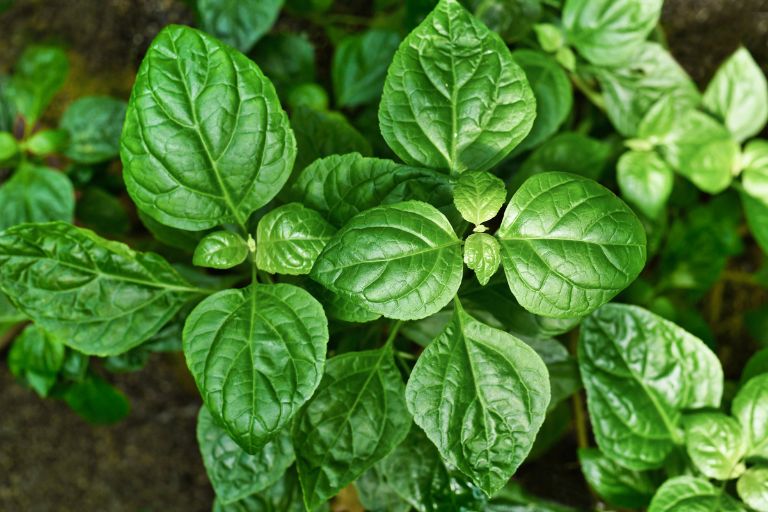
Designing a Sensory Oasis
Incorporating fragrant plants into a garage garden design is an opportunity to engage the senses and transform a utilitarian space into a sensory retreat. The following are some creative ways to incorporate fragrant plants into garage gardens.
Vertical Gardening
Vertical Planters – Install vertical planters or living walls along the walls of the garage to maximise space and create a lush, green backdrop. Choose fragrant trailing plants, such as jasmine or sweet pea, that cascade down the vertical surface to release their fragrant flowers at eye level.
Hanging baskets – Hang fragrant herb baskets or flowering plants from hooks or brackets attached to the ceiling or overhead beams. This not only adds visual interest, but also brings the scent to eye level, allowing visitors to enjoy the scent as they pass.
Hanging baskets
Fragrant herbs – Plant fragrant herbs such as rosemary, thyme and mint in hanging baskets and suspend them from the ceiling or overhead beams. As well as providing aromatic foliage, these herbs have culinary benefits and can be harvested for use in cooking.
Fragrant flowers – Choose fragrant flowering plants such as petunias, geraniums or fuchsias for hanging baskets to add a splash of colour and fragrance to the garage garden. Hang the baskets near windows or doorways where they can catch the breeze and spread their scent throughout the room.
Container arrangements
Sensory pathway – Create a sensory pathway by lining the garage entrance or walkway with containers filled with fragrant plants. Arrange containers in clusters or groups, alternating between different scents and colours to create a sensory journey for visitors.
Themed containers – Create themed container arrangements using fragrant plants that evoke specific scents or memories. For example, create a ‘Mediterranean Garden’ with containers filled with lavender, rosemary and citrus, or a ‘Tropical Paradise’ with jasmine, gardenia and frangipani.
Window Boxes
Window box gardens – Install window boxes on the outside of garage windows and fill them with fragrant herbs, flowers or trailing vines. Choose compact varieties that won’t obstruct the view but will add fragrance and beauty to the surroundings.
Indoor-outdoor connection – Window boxes can also be installed on the inside of garage windows to bring fragrance and greenery inside. This creates a seamless transition between indoors and outdoors and allows the scent of fragrant plants to waft inside.
Aromatic borders
Border plantings – Create fragrant borders along the edges of beds or paths with fragrant herbs or flowering plants. Lavender, thyme and dianthus are excellent choices for creating low-maintenance aromatic borders that define the space and add fragrance with every step.
Container borders – Use small containers or planters as borders along beds or paths and fill them with fragrant plants such as sweet alyssum or scented geraniums. Not only will this add fragrance, it will also define the garden space and prevent soil erosion.
Strategic placement of fragrant plants is essential to maximise scent dispersion and create focal points within a garage garden. By carefully considering factors such as wind direction, proximity to pathways and seating areas, and plant height and growth habit, you can create an immersive sensory experience that enhances the ambience of the space.
Near entrances and pathways
– Place fragrant plants near entryways, doorways, or pathways leading to the garage to greet visitors with delightful scents as they enter the space.
– Consider planting fragrant herbs or flowers along walkways or in containers near walkways to ensure their scents are easily accessible and enjoyable.
Around seating areas
– Place fragrant plants around seating areas, benches or outdoor furniture to create cosy nooks where visitors can relax and enjoy the soothing scents.
– Choose low-growing or trailing fragrant plants, such as creeping thyme or fragrant geraniums, to plant around seating areas so that their scent wafts gently around lounging areas.
Vertical surfaces
– Use vertical surfaces such as walls, trellises or arbors to grow fragrant vines or climbers such as jasmine, honeysuckle or climbing roses.
– Train fragrant vines to climb up trellises or along walls, creating vertical gardens that not only maximise space but also release their scents at nose level, enhancing the overall sensory experience.
At different heights
– Create visual interest and depth by placing fragrant plants at different heights throughout the garage garden. Incorporate tall shrubs or trees such as citrus or mock orange for height, medium perennials or shrubs for mid-level interest, and low-growing ground covers or herbs for a carpet of scent at ground level.
– Use raised beds, planters or hanging baskets to elevate and highlight fragrant plants as focal points in the garden.
In high traffic areas
– Plant fragrant herbs or flowers in high-traffic areas where people are likely to brush against them, releasing their scent with each touch.
– Consider placing fragrant plants near areas where you frequently work or spend time, such as near workbenches, gardening tables or outdoor cooking areas, so you can enjoy the scent as you work.
Take advantage of air currents
– Place fragrant plants where they can benefit from natural airflow, such as near open windows, doors or vents, to help spread their scent throughout the garage garden.
– Pay attention to prevailing wind directions and place fragrant plants strategically to ensure their scent is effectively carried throughout the room.
Creating a tranquil retreat in your garage garden goes beyond planting fragrant flowers and herbs. By incorporating complementary elements such as garden decor, lighting and seating, you can enhance the sensory experience and transform your outdoor space into a sanctuary of relaxation and rejuvenation.
Garden Decor
– Garden decor adds personality and charm to your garage garden, transforming it into a visually appealing retreat. Consider adding elements such as whimsical garden sculptures, colourful ceramic pots or decorative garden stakes to add character and style to the space.
– Choose pieces that complement the aesthetic of your fragrant plants and reflect your personal tastes and interests. Whether you prefer a rustic, bohemian or contemporary look, there are endless ways to enhance the beauty of your garden.
– Garden decor also offers the opportunity to incorporate additional sensory elements, such as wind chimes or water features, which add soothing sounds to the ambience and further enhance the sensory experience.
Lighting
– Lighting plays a crucial role in creating ambience and extending the enjoyment of your garage garden into the evening hours. Experiment with different types of lighting such as string lights, lanterns or solar powered path lights to add warmth and illumination to the space.
– Soft, ambient lighting can highlight the beauty of fragrant plants and garden decor, while creating a cosy atmosphere for evening relaxation. Consider installing dimmable lights or using candles or torches for a more intimate and romantic feel.
– Lighting can also improve safety in your garage garden by illuminating paths, steps and potential hazards. Choose energy-efficient LED lights or solar-powered options to minimise energy consumption and environmental impact.
Seating
– Providing comfortable seating encourages visitors to linger and enjoy the sensory delights of your garage garden. Choose seating that complements the style and scale of your outdoor space, whether it’s a cosy bench, a set of bistro chairs or a hammock strung between trees.
– Place seating strategically to take advantage of the best views and scents in your garden. Place seating near fragrant plants, water features or focal points to create inviting spots for relaxation and contemplation.
– Consider adding cushions, throws or outdoor rugs to enhance comfort and add texture and colour to seating areas. Create cosy nooks and inviting gathering places where friends and family can gather to relax and reconnect with nature.
Maintenance and Seasonal Considerations
Seasonal maintenance is essential to keep fragrant plants healthy and thriving throughout the year, especially in colder climates where winter weather can be a challenge. In the following, we’ve put together a guide to seasonal maintenance tasks for fragrant plants in garage gardens.
Spring
Pruning – Early spring is an ideal time to prune fragrant plants to remove dead or damaged branches, encourage new growth and shape the plants. Use clean, sharp pruning shears to make precise cuts and cut back any overgrown or leggy growth to maintain a compact and tidy appearance.
Deadheading – Remove spent flowers regularly to encourage continuous flowering and prevent plants from diverting energy into seed production. Deadheading also helps to improve air circulation and reduce the risk of fungal disease.
Fertilise – Apply a balanced, slow-release fertiliser to fragrant plants in early spring to provide essential nutrients for healthy growth and abundant flowering throughout the growing season. Follow the manufacturer’s instructions for rate and timing.
Summer
Water – Increase watering frequency during hot, dry weather to ensure fragrant plants receive adequate moisture. Water deeply to encourage deep root growth and to prevent the soil from drying out completely between waterings.
Mulch – Apply a layer of organic mulch around fragrant plants to conserve moisture, suppress weed growth and regulate soil temperature. Mulching also helps to improve soil structure and fertility over time.
Deadheading and pruning – Continue deadheading spent flowers and light pruning as needed throughout the summer to keep plants in shape and encourage continued flowering. Remove any diseased or pest-infested foliage promptly to prevent the spread of problems.
Fall
Prune – In late fall, after the flowering season has ended, prune more heavily to remove dead, diseased or overgrown branches. Pruning at this time will improve the overall health and appearance of the fragrant plants and prepare them for winter dormancy.
Divide and transplant – Fall is also a good time to divide and transplant fragrant plants if they have become overcrowded or have outgrown their containers or beds. Divide clumps of herbs or perennials and replant them in well-prepared soil at the appropriate spacing.
Prepare for winter – As temperatures begin to drop, prepare fragrant plants for winter dormancy by cutting back foliage and adding a protective layer of mulch around the base of the plants. Move potted plants to a sheltered location, such as a garage or cold frame, to protect them from freezing temperatures and harsh winter weather.
Wintering in colder climates
Protecting container plants – In colder climates, containerised fragrant plants can overwinter by providing insulation and protection from freezing temperatures. Move containers to a sheltered area such as a garage, basement or greenhouse to prevent the roots from freezing.
Mulch – Apply a thick layer of mulch around the base of container plants to insulate the soil and protect the roots from frost damage. Use materials such as straw, shredded leaves or pine needles for effective insulation.
Monitor moisture – Check soil moisture levels regularly during the winter months and water container plants sparingly to prevent the soil from drying out completely. Avoid overwatering as excessive moisture in cold, wet conditions can lead to root rot.
Preserving and harvesting aromatic herbs and flowers allows you to enjoy their fragrance and flavour long after the growing season is over. Whether for cooking, aromatherapy or making herbal remedies, proper harvesting and preservation techniques are essential to maintaining their potency and freshness.
Harvesting aromatic herbs
Timing – Harvest herbs in the morning when the oils are most concentrated and before the heat of the day causes them to evaporate. Avoid harvesting herbs when they are in flower as this can affect flavour and potency.
Method – Use sharp scissors or pruning shears to cut herb stems just above a set of leaves, leaving enough foliage for the plant to continue growing. Avoid cutting more than a third of the plant’s foliage at a time to ensure continued growth and vitality.
Harvesting guidelines – Harvest woody herbs such as rosemary and thyme by cutting off the tops of the stems. For leafy herbs such as basil and mint, pinch off individual leaves or harvest whole stems as needed.
Harvest frequently – Regular harvesting encourages bushy growth and prevents herbs from becoming leggy or flowering prematurely. Harvest herbs frequently throughout the growing season to promote robust growth and maintain flavour and fragrance.
Preserve aromatic herbs
Drying – The most common method of preserving aromatic herbs is by drying. Bundle the herb stems together and hang them upside down in a warm, well-ventilated area out of direct sunlight. When completely dry, remove the leaves from the stems and store in airtight containers away from heat and light.
Freezing – Another option is to freeze aromatic herbs, either whole or chopped, in ice cube trays with water or olive oil. Once frozen, transfer the herb cubes to airtight containers or freezer bags for long-term storage. Frozen herbs are convenient for use in soups, stews, sauces and other cooked dishes.
Infuse – Aromatic herbs can also be infused into oils, vinegars or alcohol to create flavoured bases for culinary or therapeutic use. Fill a clean glass jar with fresh herbs and cover with oil, vinegar or alcohol. Leave the mixture to infuse for several weeks, then strain the herbs and store the infused liquid in a dark, cool place.
Harvesting aromatic flowers
When to harvest – Harvest aromatic flowers when they are fully open and at their most fragrant and colourful. Choose flowers that are free of blemishes or signs of decay for the best quality.
Method – Gently cut the flowers from the plant with scissors or pruning shears, taking care not to damage the stems or surrounding foliage. Harvest flowers in the morning after the dew has dried but before the heat of the day causes them to wilt.
Harvesting guidelines – For flowers with multiple blooms on a single stem, such as lavender or chamomile, cut the entire stem just above a set of leaves or buds. For single flowers such as roses or jasmine, cut each flower individually, leaving a short stem.
Preserving aromatic flowers
Drying – Many aromatic flowers can be dried for use in potpourri, sachets or herbal crafts. Arrange the flowers in a single layer on a drying rack or screen and place in a warm, well-ventilated area out of direct sunlight. When completely dry, store in airtight containers away from moisture and light.
Infusing – Aromatic flowers can also be infused into oils, honey, syrups or spirits to capture their fragrance and flavour. Fill a clean glass jar with fresh flowers and cover with the liquid of your choice. Leave to infuse for several weeks, then strain the flowers and store the infused liquid in a cool, dark place.
Extending the fragrance season in your garage garden requires strategic planning and thoughtful selection of plants that bloom at different times of the year. By incorporating successive plantings, companion planting, and evergreen or winter-blooming varieties, you can enjoy fragrant scents from early spring through late fall and even into the winter months.
Successive plantings
– Plan your garden to include fragrant plants that bloom at different times throughout the growing season. Start with early bloomers such as crocuses, hyacinths and daffodils in spring, followed by mid-season bloomers such as lavender, roses and jasmine in summer, and late bloomers such as mums, asters and sweet autumn clematis in autumn.
– Incorporate annuals, biennials and perennials with staggered flowering periods to create a continuous fragrance in your garage garden. For example, plant annuals such as sweet peas, nasturtiums and marigolds in spring and summer, and biennials such as foxgloves and hollyhocks for their second year of bloom.
– Keep track of flowering times and plan for succession by sowing or planting new starts throughout the growing season. This will ensure a steady supply of fragrant flowers and herbs from early spring to late autumn.
Companion planting
– Companion planting involves pairing fragrant plants with other species that provide benefits such as pest control, pollination or soil improvement. Choose companion plants that not only complement the fragrance of your primary plants, but also improve their overall health and vitality.
– Plant aromatic herbs such as basil, oregano and thyme between flowering plants to attract beneficial insects and deter pests. Herbs also provide culinary benefits and can be harvested for use in cooking or herbal remedies.
– Consider interplanting fragrant flowers with nitrogen-fixing plants such as legumes or dynamic accumulators such as comfrey to improve soil fertility and promote healthy growth. These companion plants contribute nutrients to the soil and create a balanced ecosystem that supports the overall health of your garden.
Evergreen and winter-blooming varieties
– Incorporate evergreen shrubs, trees and groundcovers into your garage garden to provide year-round structure and fragrance. Evergreens such as rosemary, lavender and pine retain their foliage and fragrance throughout the winter months, adding interest and beauty to the garden even when other plants are dormant.
– Choose winter-blooming varieties such as witch hazel, winter jasmine and mahonia to extend the fragrance season into the colder months. These plants bloom when most other plants are dormant, providing a welcome burst of fragrance and colour in late autumn and winter.
– Make the most of indoor gardening by bringing fragrant plants indoors during the winter months. Grow fragrant herbs such as rosemary, thyme and mint in pots on a sunny windowsill, or set up a small greenhouse or grow light system to grow winter-blooming varieties indoors.
Creating a fragrant garage garden is not only a delightful way to enhance the ambience of your outdoor space, but also an opportunity to engage the senses and reconnect with nature. You can transform your garage garden into a tranquil retreat that delights the senses all year round by carefully selecting fragrant plants, placing them strategically to maximise fragrance dispersion and incorporating complementary elements such as garden decor, lighting and seating.
From the first blooms of spring to the lingering scents of winter, there are many ways to extend the fragrance season in your garage garden through successive plantings, companion planting and the inclusion of evergreen or winter-blooming varieties. Whether you’re enjoying the aroma of freshly harvested herbs in your favourite dishes, savouring the fragrance of blooming flowers as you relax in a cosy seating area, or simply taking in the beauty of fragrant plants as you go about your day, a fragrant garage garden offers endless opportunities for sensory enjoyment and relaxation.
